Puri: After the homecoming (Bahuda Yatra), devotees got an inkling of Lord Jagannath’s affluence as he, along with His siblings gave darshan in Suna Besha (golden attire) from 4 pm on Thursday.
One of the richest deities in the country, they glittered atop the three chariots, Nandighosa, Taladhwaja and Debadalana parked at Singhdwar of Jagannath Temple, donned in huge quantities of gold ornaments.
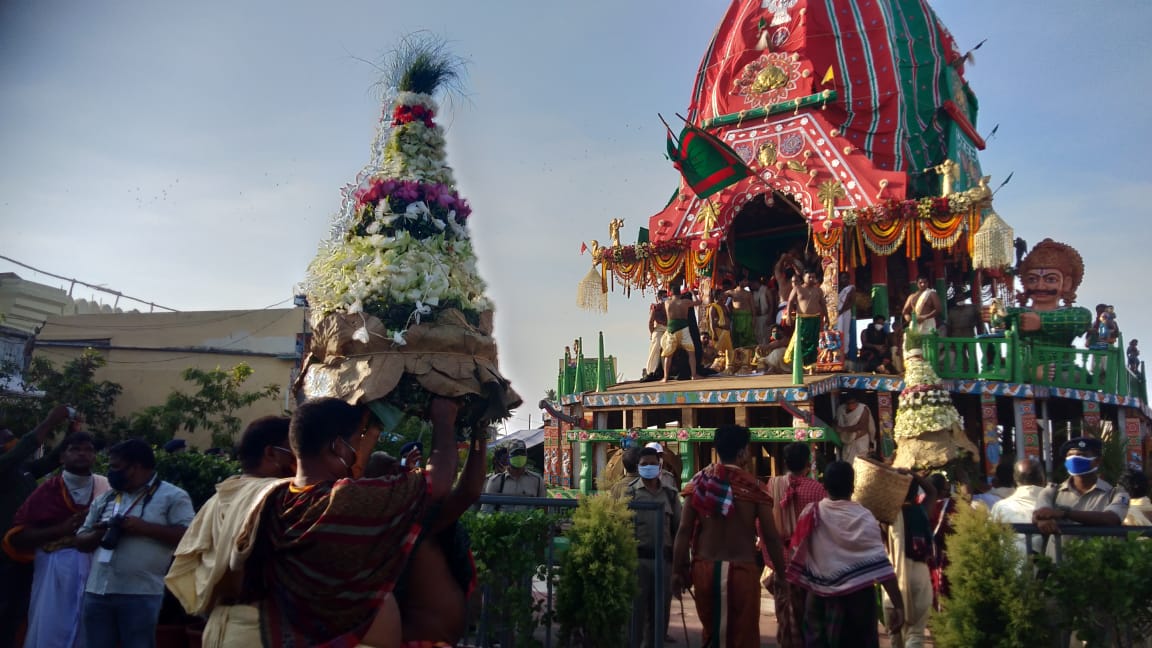
Golden Tales
Legend has it that Suna Besha began during the reign of King Kapilendra Deb in 1460 when he brought gold on 16 elephants to Puri after a winning a battle with another king and donated them to Jagannath Temple, said a temple priest.
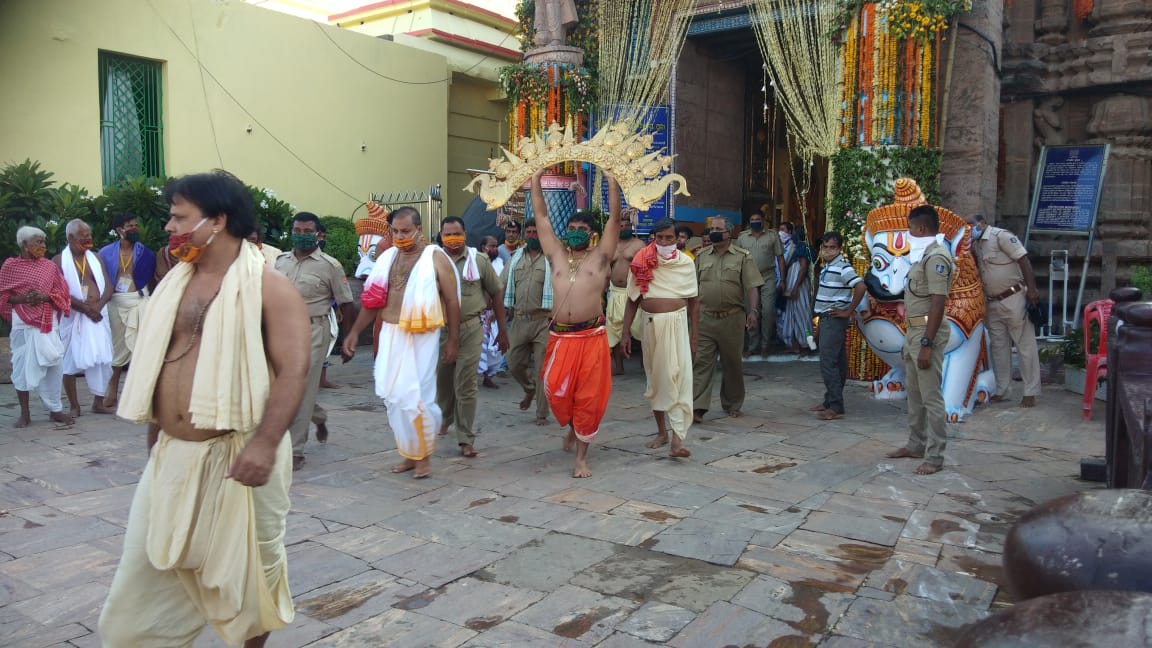
The Vault
The temple’s bhandara ghar is where the gold ornaments are stored. Escorted by armed policemen and temple officials, bhandara mekap priests (store in-charge) bring the gold jewellery laced with invaluable stones and hand it over to Puspalaka and and Daitapati priests
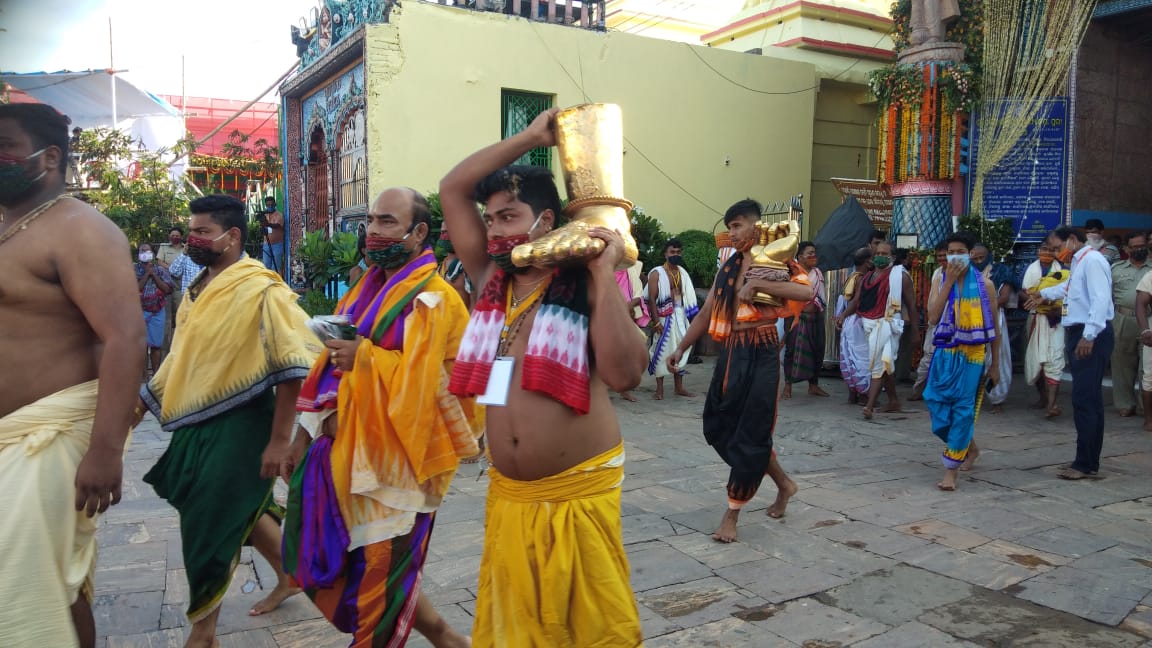
All That Glitters & Shines
According to temple sources, the sibling deities wear gold jewellery, weighing nearly 208 kg (2 quintals 8 kg), on this occasion.
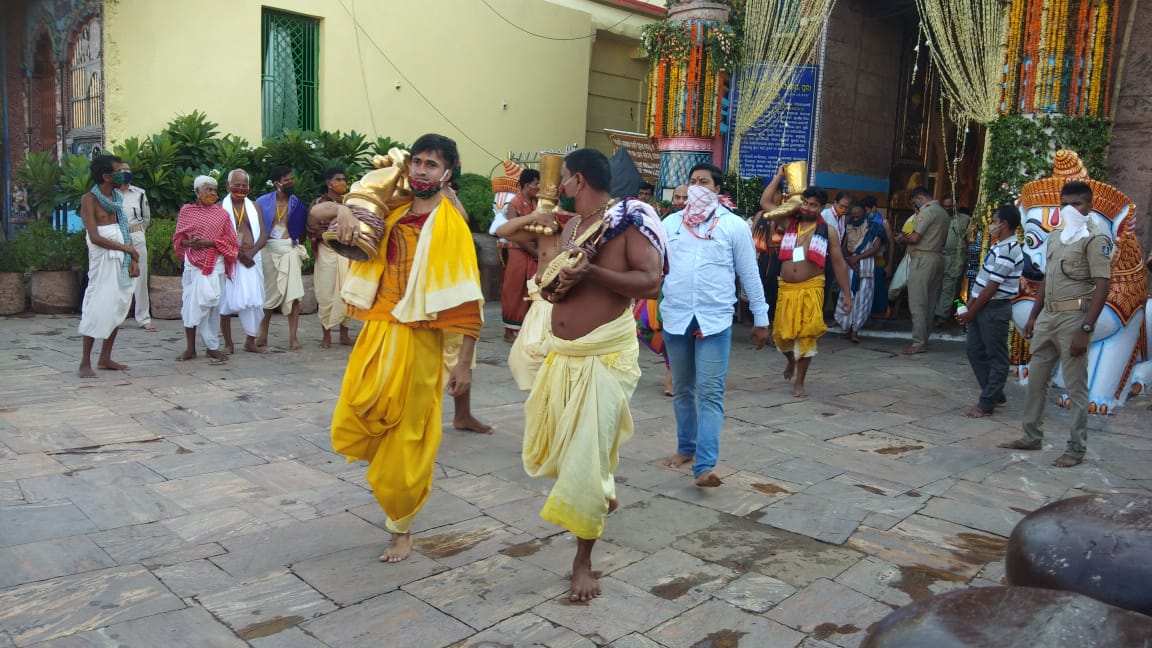
It takes the servitors nearly an hour to decorate the Lords with gold ornaments and other jewellery- Sri Hasta (gold hand), Sri Payar (gold feet), Sri Mukuta (big gold crown), Sri Mayur Chandrika (gold peacock feather for Lord Jagannath), Sri Chulapati (an ornament traditionally worn on the forehead), Sri Kundal (gold earring with a hanging ball), Sri Rahurekha (a half square-shaped gold aura), Sri Mala (necklaces), Sri Chita (third eye of Lords), Sri Chakra (gold wheel), Sri Gada (gold bludgeon), Sri Padma (gold lotus) and Sri Sankha (a silver conch).
Traditional Designs
According to the priest, the deities were decked up with gold ornaments of nearly 138 designs during the era of Kapilendra Deb. The number has come down to 20 to 30, now, he further said.
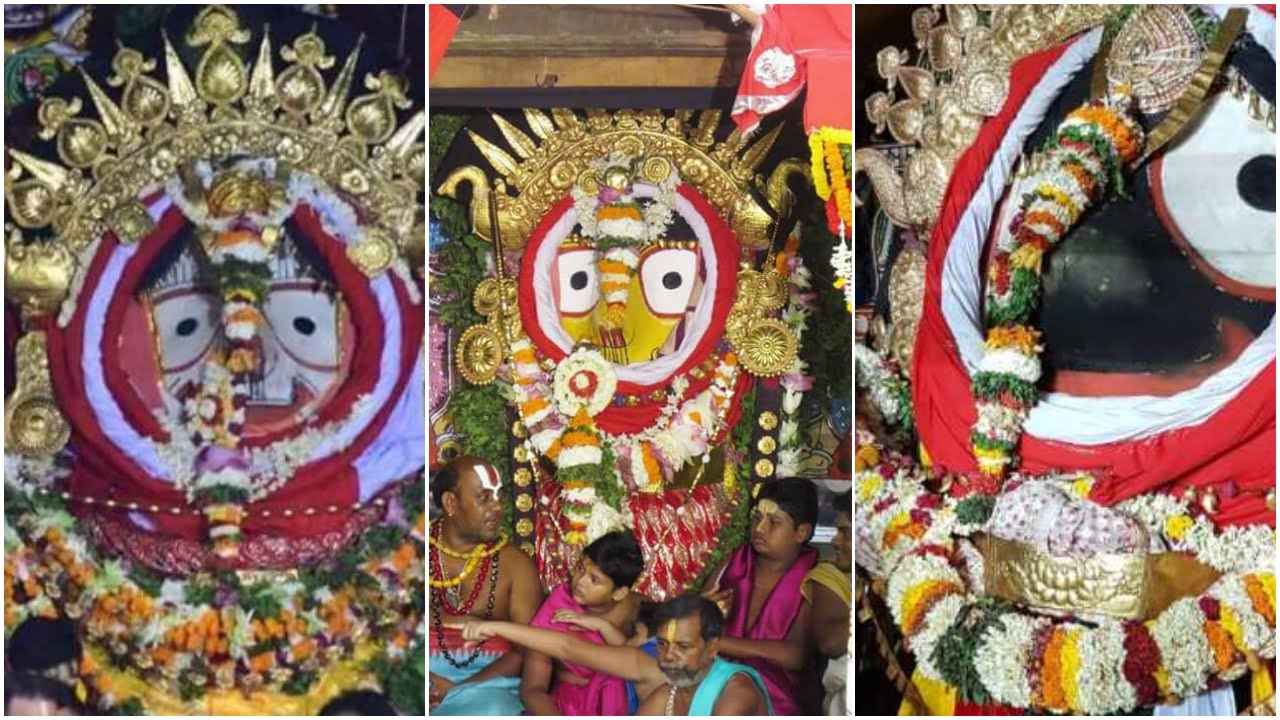
The designs are still intact. They are repaired as and when required using raw gold donated by pilgrims, he added.
Other Occasions
The Lords are adorned in gold on four other occasions —Dussehra, Kartika Purnima, Pausa Purnima and Dola Purnima — in a calendar year. These, however, are observed inside the temple.


